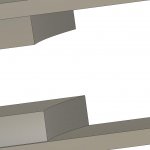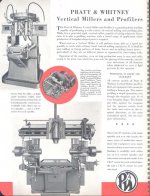I have a part I am making for a customer that I am frankly stumped at how I am going to machine a feature, let alone how it was machined originally. Part was manufactured in production in the 1920's.
Part has in inside pocket, about .376" across, that has a square corner and is along a radius. The tool marks for this feature show a tool that is working or moving along that radius.
Say for example, you had a shaper, and a rotary table, as the shaper advanced, the rotary table advanced to generate the curve.
I tried to take a picture of the original part to show the tool marks, but cannot get a decent picture where the tool marks show up. You have to hold the part just right, and get a reflection, but not direct light, to get the marks to show up.
I have attached pictures of the solid model I made of the part.


I am curious what machine historically had the ability to make these cuts?
Part has in inside pocket, about .376" across, that has a square corner and is along a radius. The tool marks for this feature show a tool that is working or moving along that radius.
Say for example, you had a shaper, and a rotary table, as the shaper advanced, the rotary table advanced to generate the curve.
I tried to take a picture of the original part to show the tool marks, but cannot get a decent picture where the tool marks show up. You have to hold the part just right, and get a reflection, but not direct light, to get the marks to show up.
I have attached pictures of the solid model I made of the part.


I am curious what machine historically had the ability to make these cuts?



